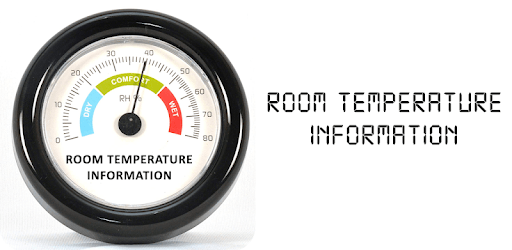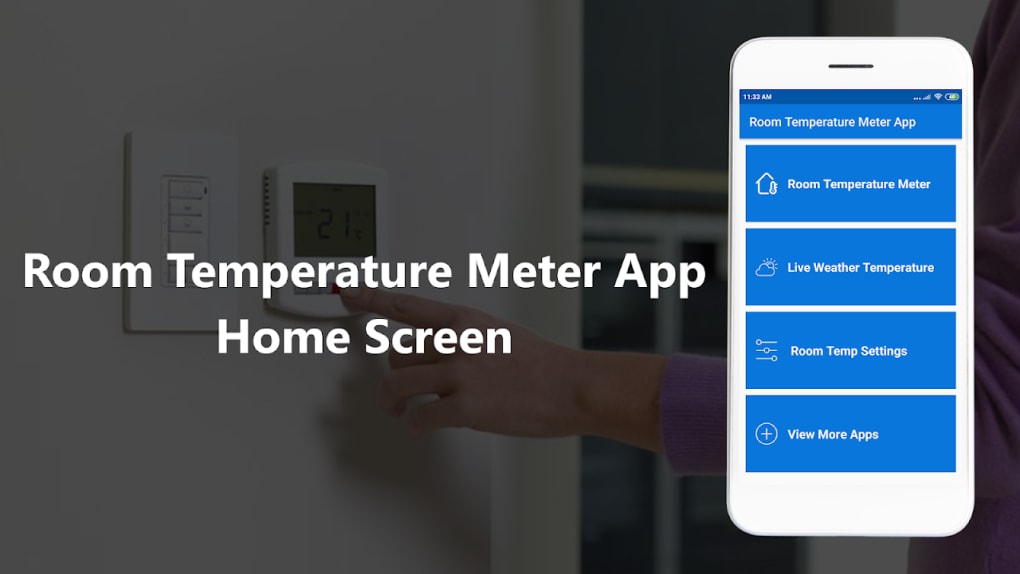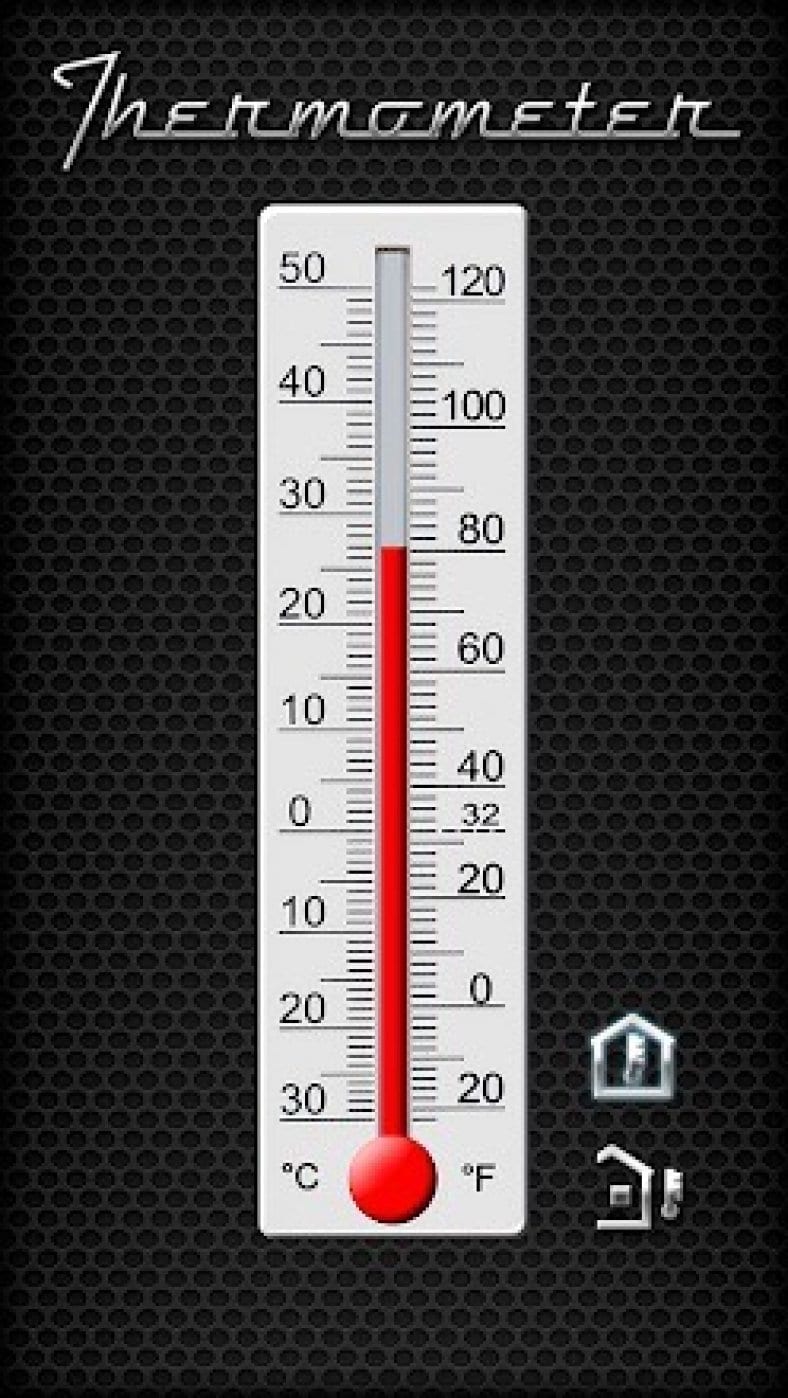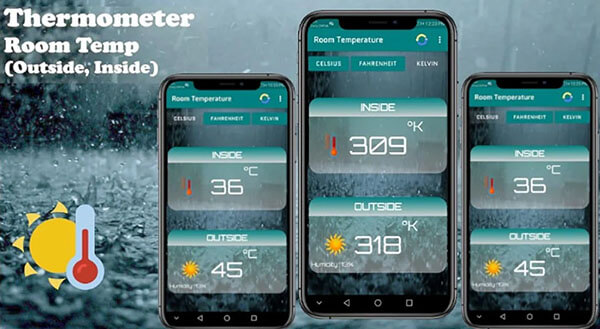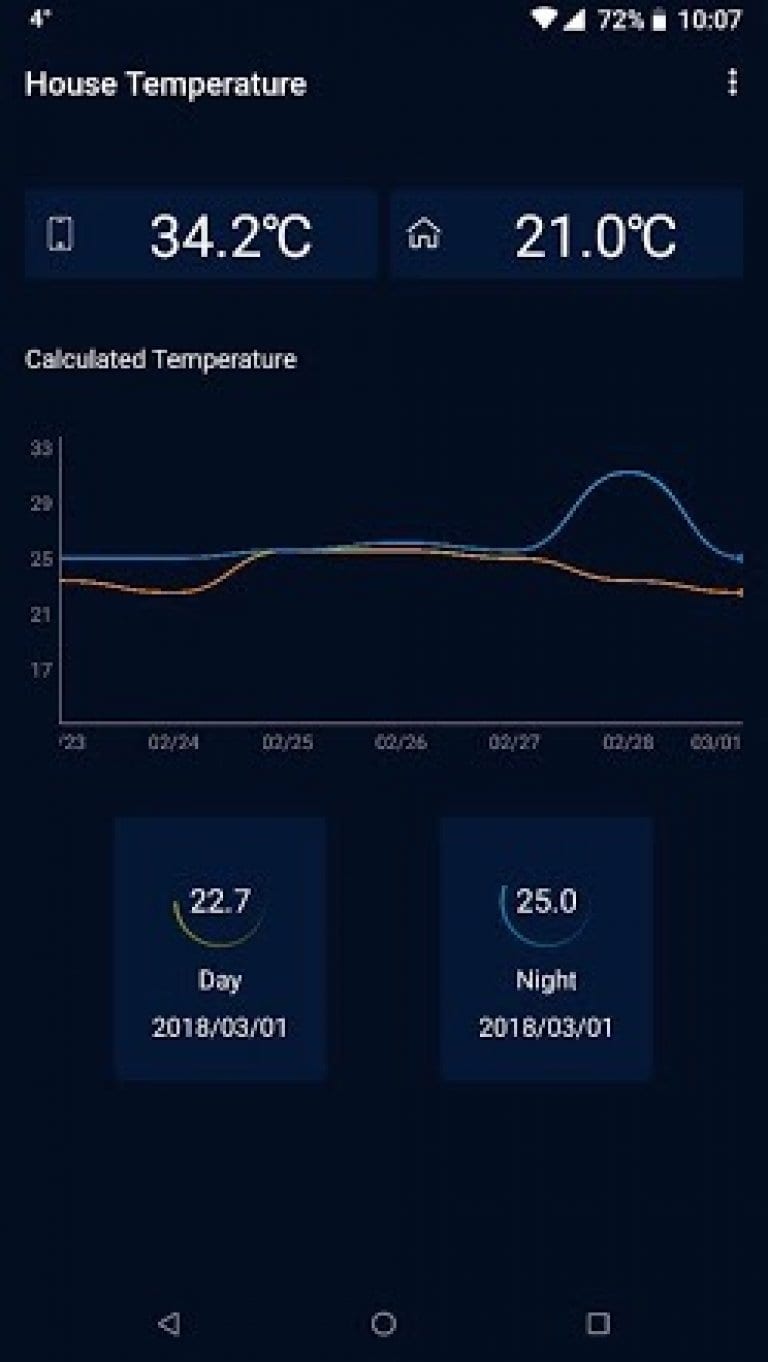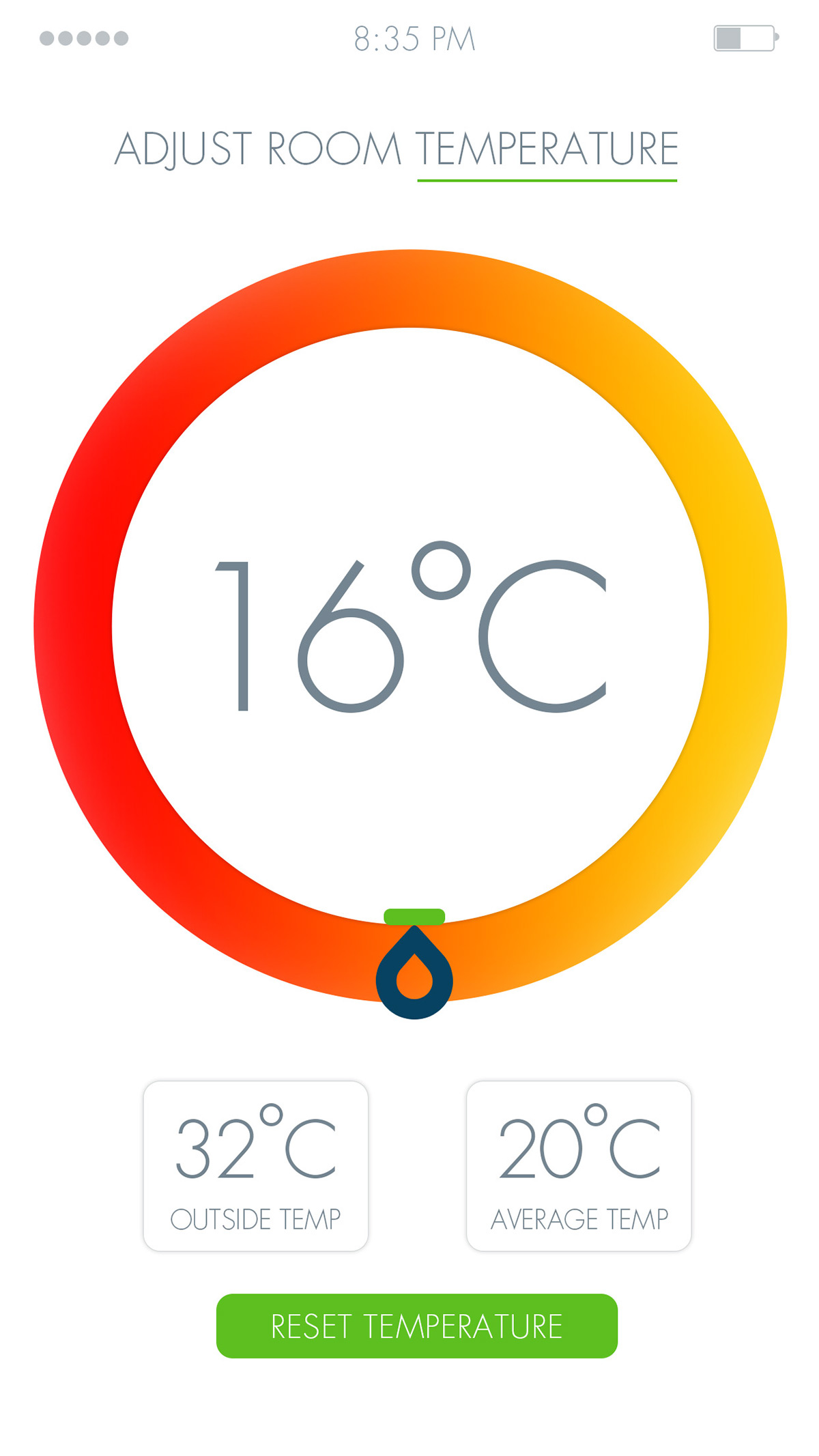Is There An App To Measure Room Temperature

Imagine stepping into your home on a sweltering summer day, the air thick and heavy. Or perhaps it’s a crisp winter morning, and you're greeted by a bone-chilling draft. In both scenarios, the first thought that crosses your mind is likely, "What's the temperature in here?" You reach for a thermostat, but what if there was a quicker, more convenient way to get an accurate reading, right at your fingertips?
The question on many minds is: can your smartphone, the ever-present gadget in your pocket, truly measure the temperature of a room? While a dedicated temperature sensor app isn't quite a reality for most smartphones, the tech world offers intriguing alternatives and workarounds that provide valuable insights into your ambient environment. This article explores the current capabilities of smartphones in temperature sensing, the potential of associated technologies, and what the future might hold for truly accurate, app-based room temperature readings.
The Reality of Smartphone Sensors
Smartphones are packed with sensors, from accelerometers that detect motion to GPS chips that pinpoint location. However, a dedicated ambient temperature sensor is conspicuously absent from most mainstream devices. This is primarily due to size constraints, cost considerations, and the fact that internal temperature sensors, already present for managing the phone's performance, can be affected by the device's own heat generation.
Instead of directly measuring the ambient temperature, smartphones often rely on indirect methods. These methods typically involve accessing data from nearby weather stations or using the phone's internal temperature sensor as a proxy, albeit with limited accuracy. Let's delve deeper into these approaches.
Leveraging Location Services and Weather Data
Many weather apps use your phone's GPS to determine your location and then pull temperature data from nearby weather stations. This is a relatively accurate way to get an estimate of the room temperature, assuming your indoor environment closely matches the outdoor conditions. Popular weather apps like AccuWeather, The Weather Channel, and WeatherBug all utilize this approach.
However, keep in mind that the temperature reported is for the outside environment. Factors like insulation, heating, ventilation, and air conditioning (HVAC) systems can significantly alter the indoor temperature compared to the outside temperature reported by these apps.
The Internal Temperature Sensor: A Limited Proxy
Most smartphones contain an internal temperature sensor designed to monitor the device's processor and battery temperature. This sensor's primary function is to prevent overheating and ensure optimal performance. While it can technically detect temperature changes, using it to measure room temperature is challenging due to several factors.
The internal sensor is heavily influenced by the phone's own activity. Running demanding apps, charging the battery, or even prolonged screen time can cause the phone to heat up, skewing the sensor's readings. Consequently, any app attempting to use this sensor as a reliable room thermometer will likely produce inaccurate results.
Exploring Alternatives and Smart Home Integration
While direct, app-based room temperature measurement might be limited on most smartphones, several alternative solutions offer more accurate and convenient ways to monitor your indoor climate.
Smart Thermostats and Dedicated Sensors
Smart thermostats like Nest, Ecobee, and Honeywell provide precise temperature readings through dedicated sensors. These devices not only display the current temperature but also allow you to remotely control your home's heating and cooling system via a smartphone app. They often have built-in features like energy-saving schedules and learning capabilities, further enhancing their value.
Furthermore, you can purchase standalone, dedicated temperature and humidity sensors that connect to your smartphone via Bluetooth or Wi-Fi. These sensors offer more accurate readings compared to relying on weather data or the phone's internal sensor. They provide real-time temperature and humidity data and often feature historical data logging for tracking trends over time. Companies like SensorPush and Govee are popular choices for these types of devices.
Smart Home Ecosystem Integration
Many smart home ecosystems, such as Apple HomeKit, Google Home, and Amazon Alexa, allow you to integrate temperature sensors and smart thermostats. This integration allows you to monitor and control your home's temperature from a central hub, often via voice commands. This interconnectedness can automate tasks such as adjusting the thermostat based on the current temperature or triggering alerts if the temperature exceeds a certain threshold.
By combining smart home hubs with dedicated sensors, users can build a comprehensive and accurate system for monitoring and managing their indoor climate.
The Future of Smartphone Temperature Sensing
While current smartphones lack dedicated ambient temperature sensors, technological advancements may change this in the future. Miniaturization of sensors, coupled with advancements in data processing and algorithm development, could pave the way for more accurate and reliable temperature readings directly from smartphones. Imagine a future where your smartphone can seamlessly monitor your room's temperature and automatically adjust your smart thermostat, creating a perfectly comfortable environment.
Another possibility is the rise of specialized smartphone accessories. Just as external lenses and microphones enhance the phone's photography and audio capabilities, a clip-on or plug-in temperature sensor could provide highly accurate readings on demand. These accessories could leverage advanced sensor technologies to overcome the limitations of internal sensors and provide a truly reliable temperature measurement solution.
Conclusion
For now, while you can't wave your smartphone and get a precise room temperature reading through a dedicated app, valuable alternatives exist. Weather apps provide a general estimate based on outdoor conditions, while smart thermostats and dedicated sensors offer more accurate and controllable solutions. The future promises potentially integrated solutions, with technological advances paving the way for more accurate temperature readings directly from our smartphones.
Until that future arrives, these existing options provide a good way to monitor your home's climate and ensure that your indoor environment is comfortable and healthy. They are evidence that the tech world is always striving to find innovative solutions to everyday problems, even the simple task of knowing the temperature of a room.


